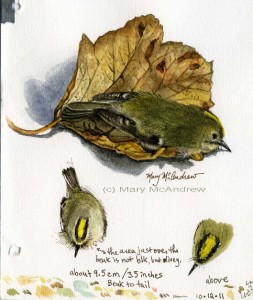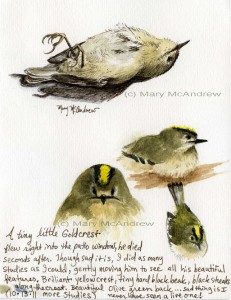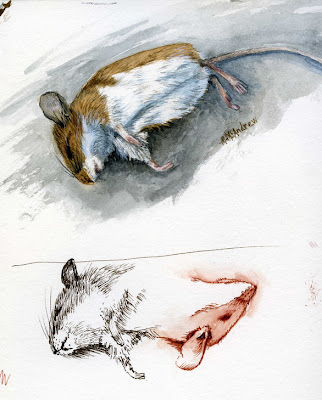Today, though it is sad, I did a watercolor study of a blackbird female that died after flying into our patio window. Just as other naturalists before me have done, I took advantage of having a real bird in front of me and did a study as quickly as I could. I find that if you love nature you can do this as a way of showing respect for the creature and not think of it as ‘gross’. Of course always be careful handling things like this by washing your hands after, putting it on plastic, not having food or drink nearby while working…just to be safe. I did notice a little tiny bug or two on it as I worked, which made me work even quicker, to get it out of the house sooner!
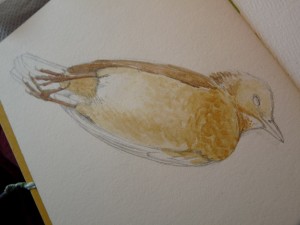
Watercolor study of Female Blackbird-stage 1
The picture above shows my pencil sketch and beginning stages of watercolor. I am laying in the golden color that I see ‘under’ the darker colors of the feathers.
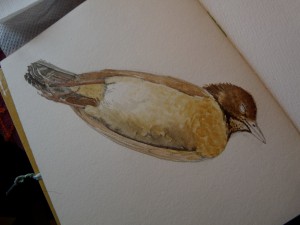
Watercolor study of Female Blackbird-stage 2
Here I put dark tone on the tail and more darks on the head and some cool tones along the side of the breast to start to round the form.
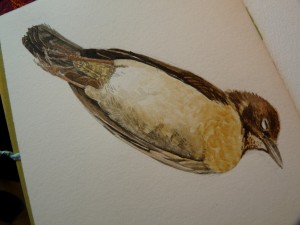
Watercolor study of Female Blackbird-stage 3
Some more dark tones and details are laid in, feathers on ‘bottom’ wing.
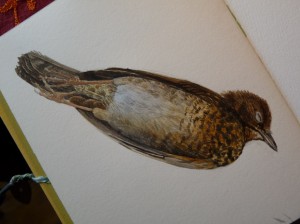
Watercolor study of Female Blackbird-stage 4
At this stage I stopped painting feeling it was done, at least working from the ‘real’ model. I put a light wash of cool blue on the belly and added more color to the breast along with more details there.
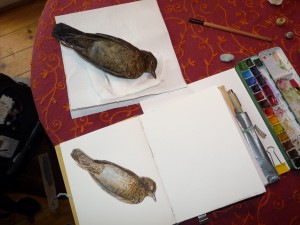
Watercolor study with Blackbird
When I stood up and looked from further back, I felt it needed a more broad wash of dark on the birds right side so I just grabbed my brush and quickly washed some tone on, while standing up. Many times I like to work on my watercolors from a standing position to keep them loose and free; if it’s a detailed painting I like to either start it while standing to have a loose feel, or at least finish it this way. I could add some loose color around the bird, but I just didn’t feel like adding to it.
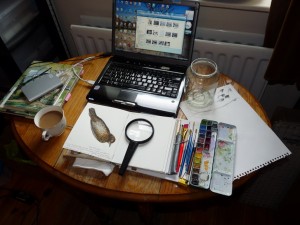
My set up to add final details from computer
So on another day I set up to touch up details using my photographs of the dead bird from my laptop. I used my field pan of watercolors and brushes and a magnifying glass to help me see details.
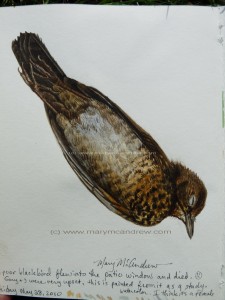
Watercolor study of female Blackbird - stage 6
At this point I decided it was finished. To be honest, I wanted to go back and ‘scratch’ out highlights along the legs to show their shine and make them stand out from the dark background, I also wanted to add grasses around the bird, but I’ve had too many other things to work on and just didn’t get time. So it’s DONE.
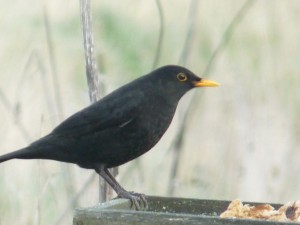
Blackbird male
I don’t want to leave you with a dead Blackbird, here’s two photos of a healthy male so you can see how nice they look, their song is even nicer!
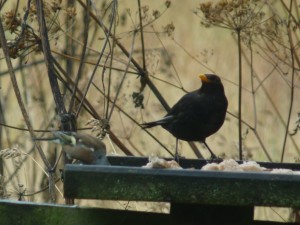
Blackbird male
As a side note, the Blackbird (UK) is in the Thrush family just as my American Robin is. For my American readers you’ll notice a very close silhouette to our Robin, and the song, though different is beautiful as thrush songs are. The male Blackbird is ‘black’ with a yellow beak, the female looks, well like my painting, brown with speckles on breast.
